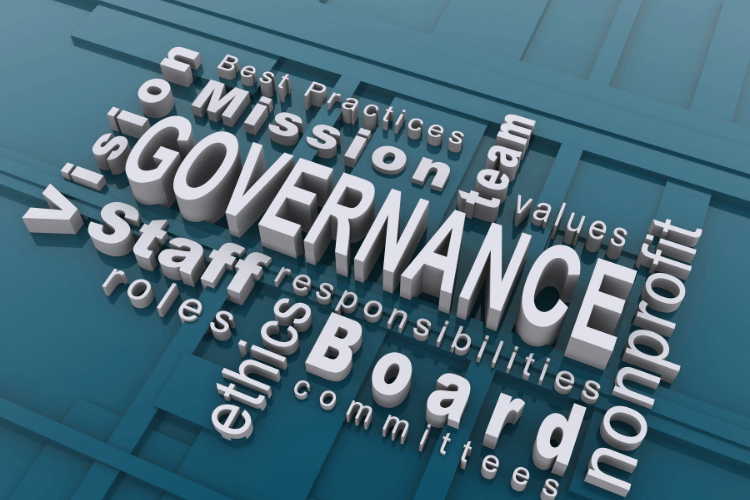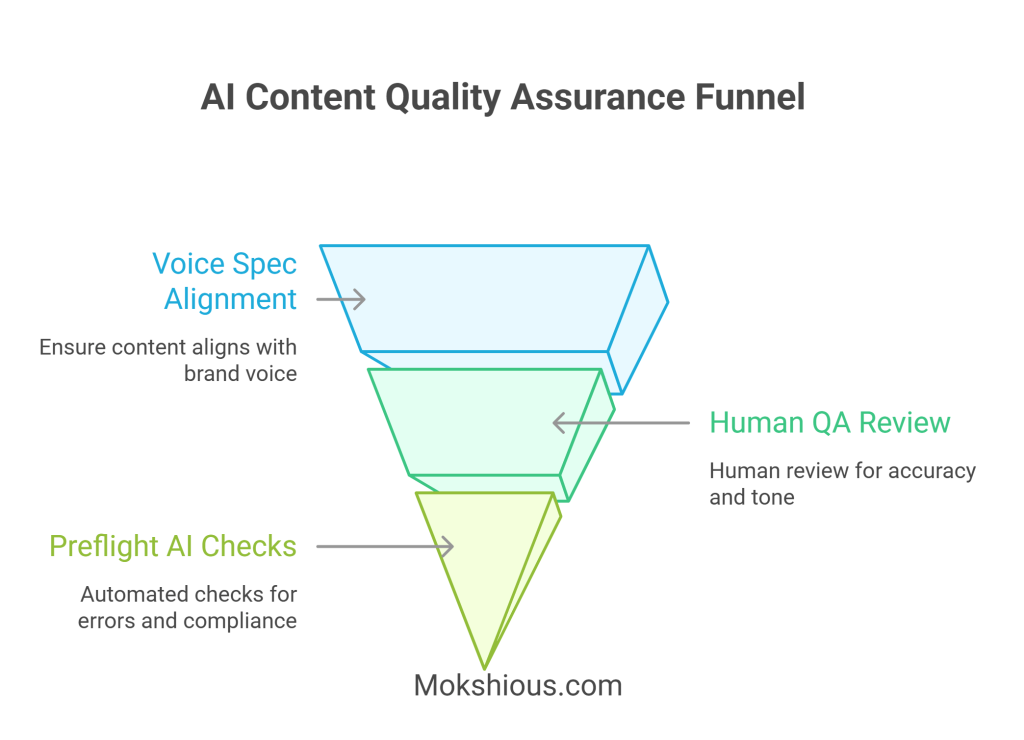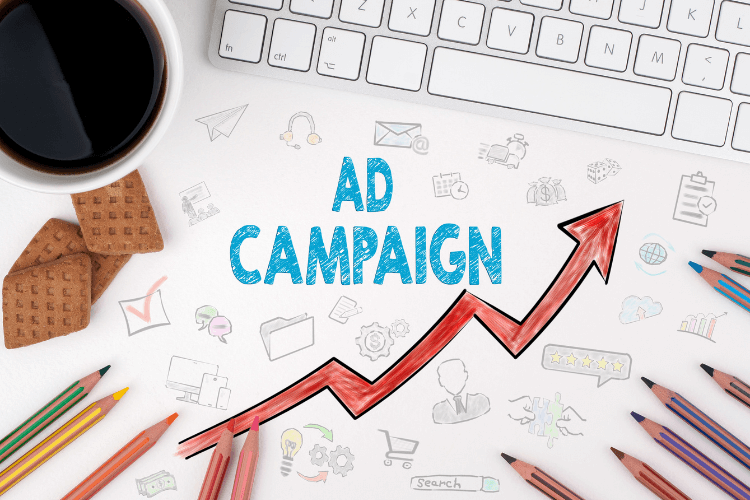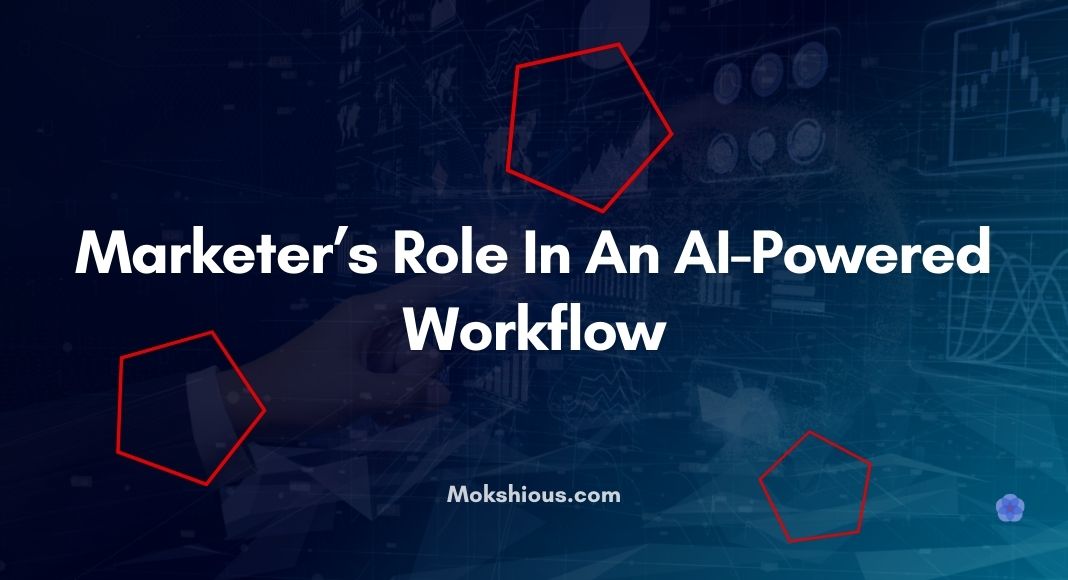AI isn’t coming for your marketing job; it’s coming for your routine. You’re not being replaced. You’re being upgraded.
Today’s AI marketing world is moving fast. But with all this talk about AI-powered marketing workflows, it’s easy to get swept up in AI automation hype and forget your actual role as a marketer. You’re not here to push buttons. You’re here to architect the strategy, safeguard the brand, and steer the machine.
Let’s break down what that means.
Drawing the Line: What Humans Own vs. What AI Automates

In an AI-Powered marketing workflow, the real magic isn’t in handing everything over to automation; it’s in knowing where your role begins and where AI’s sweet spot lies. That’s where strategy erodes, brand voice gets fuzzy, and compliance red flags start flying.
Here’s how to get clear on who does what.
Let AI do the legwork (I hope you haven’t read that as lega’L’work)
AI is excellent at repetitive, data-heavy, or experimentation-driven tasks. It can:
- Generate content drafts and variants for testing
- Run real-time bidding strategies on paid platforms
- Scale multivariate testing across ad copy, thumbnails, and CTAs
- Automatically expand audiences using behavioral data (as seen in Meta Advantage+ and Google Performance Max)
For example, Meta Advantage+ audience details, mix your creatives, captions, and call-to-actions to find the best performing combinations. Meanwhile, Google Performance Max acts like a conversion radar, identifying patterns and placements across Search, YouTube, Gmail, Discover, and more.
In short, AI is brilliant at optimizing and adapting at scale, things humans can’t do fast or frequently enough.
What marketers must own
While AI can generate, test, and scale, it can’t think strategically or empathetically. That’s where you come in. Marketers need to architect the intent behind each campaign and own the levers that directly influence long-term brand success.
Here’s what only humans should own:
- Brand voice and creative direction: AI might help you write, but it doesn’t understand tone, subtlety, or emotional nuance the way you do. You define the voice, tone, and visual aesthetic.
- Audience insights and ICP development: AI can suggest lookalikes or similar audiences, but only marketers can truly understand their customers’ pain points, motivations, and decision-making triggers.
- Key performance indicators (KPIs): You define what success looks like, whether that’s CAC under $150, LTV above $1,000, or payback within 3 months. AI doesn’t know your business goals. You do.
- Compliance, disclosure, and ethical review: AI can’t determine if something violates GDPR, makes an unsubstantiated claim, or pushes a product in a regulated industry. That responsibility lies with marketers and legal teams.
Example: Let’s say you’re running a Meta Advantage+ campaign. The AI automatically rotates through 20 creative variants. One of them generates the most clicks, but the copy includes a claim like “Guaranteed to double your revenue.” That might boost CTR, but it could also get your ad account flagged or damage your credibility. That’s where you step in and override.
Drawing the line between AI automation and human accountability doesn’t slow you down; it protects your brand and improves long-term outcomes. The smartest approach to AI in marketing isn’t about letting it run wild. It’s about building a real partnership, where you design the strategy, set the rules, and let the machine handle the execution inside those boundaries.
Governance Before Generations, Risk-Proofing Your Workflow

Before you start cranking out AI-generated campaigns, content variations, or ads at scale, pause. There’s a crucial layer that needs to come first: governance.
Marketing leaders often jump straight into execution, prompting AI to write emails, spin up Google Performance Max campaigns, or build thousands of SEO pages. But without clear rules and systems in place, you’re basically giving a toddler a power tool. Fast? Sure. Safe? Not even close.
Let’s explore how to build a governance layer that protects your brand, keeps you compliant, and actually strengthens your AI-powered marketing workflow.
Adopt an AI governance framework
The smartest way to start is by adopting a proven framework. The NIST AI Risk Management Framework (AI RMF) is a great foundation. It walks you through four pillars:
- Map where AI is being used in your marketing stack
- Measure the risks it introduces (bias, hallucination, data leakage, etc.)
- Manage those risks with controls and training
- Govern the entire process with oversight and accountability
This isn’t just for big enterprises. Even a 3-person marketing team using Jasper or Copilot should map where AI is generating output and set basic guidelines.
Ask questions like:
- Is AI writing anything that makes product or legal claims?
- Are AI outputs going live without review?
- What happens if an AI-generated social post backfires?
Harden your prompts and inputs
Prompt engineering isn’t just about getting better results; it’s also about reducing risk.
Let’s say you’re using an AI content tool to generate landing page copy. If your prompt is vague (“Write a benefits-driven landing page for our SaaS”), you might get back something filled with exaggerated claims or misleading promises. That’s a brand and legal risk.
Instead:
- Use prompts that reference your brand’s claims list, tone rules, and target persona
- Avoid open-ended generation for anything regulated (finance, health, legal)
- Apply guardrails using templates and pre-built prompt frameworks
Review the OWASP LLM Top 10 list for common AI risks, like prompt injection, sensitive data leaks, or overtrusting model output. Translate each one into a policy.
For example:
- “Always review AI-generated copy for statistical or legal accuracy.”
- “Never feed proprietary data into prompts without redaction.”
- “Label all AI-assisted assets before publishing.”
Respect data boundaries
Let’s get real:
Most marketers don’t read the data usage policies of the tools they’re using. But if you’re prompting OpenAI’s GPT-4 via API or letting Copilot access your team’s docs, you’d better know where that data is going.
Here’s the breakdown:
- OpenAI offers a Zero Retention mode for API usage (but not by default)
- Microsoft 365 Copilot keeps data inside your enterprise tenant
- Jasper stores prompts and responses unless otherwise configured
Build a simple data policy:
- What data can be used in prompts?
- Who can generate content via AI?
- What tools are approved for use?
- Are redaction tools in place?
Use platforms like:
- GitHub Secret Scanning: To catch API keys and secrets in content
- Google DLP: To detect and redact names, emails, and PII
- OpenAI’s Data Processing Addendum: To understand your legal responsibilities
Governance isn’t about slowing down. It’s about creating confidence. When everyone knows the rules, marketing teams can use AI freely, without second-guessing if they’re crossing a line.
Adopt an AI governance framework
Before you scale your AI campaigns, lock down your risk framework. NIST’s AI risk management framework gives a simple model: map, measure, manage, govern. This helps you track where AI is being used, what risks it brings, and how to reduce those risks without stopping innovation.
Harden your prompts and inputs
Prompt injection, hallucinated claims, and leaking sensitive data are real risks. Review the OWASP LLM Top 10 list. Turn each of those risks into a line in your marketing playbook. For example: “Never allow prompts to generate product claims without validation.”
Respect data boundaries
Tools like OpenAI, Jasper, and Microsoft Copilot each have different retention policies. Know them. OpenAI’s api can be set to zero-retention mode. Microsoft Copilot operates within enterprise M365 walls. Set clear rules: what data can enter a prompt, who approves uploads, and how long outputs are stored.
Don’t rely on hope. Use tools like GitHub secret scanning and Google’s dlp api to automatically scrub PII and api keys from content before publishing.
Codify Brand Voice & Guardrails at Scale

Let’s face it, AI can write fast, but it can’t feel your brand. Not the way you or your team does. That’s why, as your marketing workflow becomes increasingly AI-powered, it’s more important than ever to codify brand voice and implement safety guardrails that scale with your content velocity.
If you skip this step, you’ll end up publishing content that might technically “work” but doesn’t sound like you. Even worse, you might ship something legally risky or reputationally damaging.
Here’s how to lock down your brand voice and build guardrails that keep your AI marketing strategy on course.
Create a living “voice spec” document
Think of your voice spec like a GPS for AI. Without it, your outputs are wandering aimlessly. With it, your content stays consistent, aligned, and instantly recognizable.
Your voice spec should include:
- Tone guidelines: Are you witty, confident, empathetic, or technical? Define the spectrum and give do/don’t examples.
- Do/Don’t word list: Ban certain phrases (e.g., “cheap,” “guaranteed,” or industry jargon) and encourage others that reflect your positioning.
- Claims checklist: Legal and compliance teams should weigh in here. What are the approved claims you can make about your product or service? What needs legal sign-off?
- Example outputs: Include 3–5 examples of excellent content, social posts, ad copy, email intros, etc., to train both humans and AI.
Keep your voice spec in Airtable, Notion, or Figma so it’s searchable, version-controlled, and collaborative.
Implement human-in-the-loop QA
Even the best AI tools make weird calls. Maybe it’s a hallucinated statistic. Maybe it’s off-brand slang. Or maybe it’s a sentence that sounds fine… until you read it out loud.
That’s why you need human-in-the-loop QA (quality assurance) built into your AI-powered marketing workflow.
Here’s what to do:
- Build a QA checklist specific to AI outputs. Include grammar, tone, factuality, and alignment with your voice spec.
- Assign rotating reviewers or owners. If one person always approves, you risk blind spots.
- Create escalation rules. If a piece of content makes bold claims or is going into a regulated channel (e.g., healthcare ads or financial emails), it must be reviewed by legal or compliance.
Remember: QA is not just about “fixing errors”, it’s about protecting brand equity.
Add preflight AI checks
Before content hits the scheduler, it should go through one last filter: automated scanning. This isn’t a fancy AI trick; it’s common sense ops.
Use tools like:
- GitHub Secret Scanning: Catch accidental API keys or passwords embedded in content
- Google DLP (Data Loss Prevention): Scan for names, phone numbers, or PII
- AI Hallucination Tools: Run AI content through validation layers (via RAG systems or fact-check APIs) to check for made-up data or broken logic
You should also have a policy around redaction:
- What types of data are never allowed in prompts?
- Should scraped or enriched data be anonymized?
- How is data handled across third-party tools?
Codifying your brand voice and implementing guardrails won’t slow you down. In fact, it’ll do the opposite. It creates a shared foundation across marketing, ops, and compliance so your team can produce at scale, with confidence, not hesitation.
Create a living “voice spec” document
This isn’t a branding exercise. This is a survival kit. Your voice spec should:
- Define tone of voice (playful? serious? curious?)
- Include “do/don’t” words and phrases
- List regulated or high-risk claims to avoid
- Provide examples of good vs. bad copy
Tools like Figma or Airtable make it easy to share across teams and platforms.
Implement human-in-the-loop qa
Don’t ship unreviewed AI copy. Flag anything:
- With legal claims
- Related to pricing or performance
- That touches regulated industries (health, finance, etc.)
Build a qa queue and rotate reviewers. Use checklists, not instincts.
Add preflight AI checks
Install scans for secrets, PII, and tone drift. GitHub’s secret scanning is free. Google DLP lets you redact names, emails, and payment info. Do this before anything leaves your cms or scheduler.
Maintain Velocity Without Sacrificing Quality

Moving fast is great until your creative output starts feeling like a factory line. In the rush to scale, many teams crank out AI content at breakneck speed, only to realize the end result feels… lifeless. Or worse, off-brand.
The challenge is this: how do you maintain content velocity across platforms, campaigns, and workflows, without sacrificing the nuance, clarity, and personality that makes your marketing work?
The answer lies in building a structured, repeatable pipeline where AI plays the support role, and humans stay in charge of quality and alignment.
Framework your AI pipeline
An AI-powered marketing workflow needs more than good prompts. It needs a well-defined process.
Here’s a proven five-step pipeline that balances scale with quality:
- Prompt with precision: Use custom prompt templates for different formats: blog posts, LinkedIn hooks, ad copy, email intros, etc. Reference your voice spec and claims list in every prompt.
- Outline first: Don’t jump straight to full generation. Start with an outline. That lets your team review structure and messaging direction before AI fills in the blanks.
- Draft with AI: Let tools like Jasper or Copilot generate the first version. This saves time, but it’s only the beginning.
- Human edit pass: A marketer (not AI) polishes the copy. This step is where nuance, tone, clarity, and context really come alive.
- QA + approval: Run the final content through your AI QA checklist (grammar, brand voice, PII, hallucinations). Then send it to scheduling.
Pro tip: use Airtable or Asana to manage this pipeline with statuses like “Prompted,” “Outlined,” “Drafted,” “Edited,” and “Approved.” That gives you visibility without micromanaging.
Embed disclosure into content
As AI becomes part of your daily publishing routine, transparency matters more than ever. Some platforms already require disclosure when content is AI-generated or assisted. But beyond compliance, disclosure builds trust with your audience.
Here’s how to embed disclosure without ruining the flow:
- In footers: “This article was AI-assisted and reviewed by our editorial team.”
- In email signatures: “Drafted with Copilot, finalized by [Name]”
- On social posts: Use a hashtag like #AIAssisted or a soft note: “Created with the help of AI tools.”
Keep it light, honest, and consistent. You’re not hiding that you use AI; you’re showing you use it responsibly.
Stay platform-aware
Each channel has its quirks. An AI-generated blog post might work great with some editing. That same post repurposed as a Twitter thread or YouTube script? Not so much, unless you reshape it.
That’s where human oversight becomes irreplaceable.
- Short-form: Refine hooks and punchlines. AI tends to ramble. You need a punch.
- Email: Ensure clarity and compliance (unsubscribe rules, no false urgency).
- Ads: Check against platform ad policies (Meta, Google, TikTok). Certain words can trigger disapproval or reduced reach.
Maintaining velocity without sacrificing quality is all about systems, not shortcuts. You’re not here to generate faster. You’re here to ship better, and more often, with fewer mistakes.
Framework your AI pipeline
Moving fast is valuable, but rushing leads to sloppy work. The answer is to create a repeatable content pipeline where AI supports the process and humans keep control.
- Prompt: Use templates that guide tone, structure, and output format
- Outline: Let the AI structure content before generating full copy
- Draft: Human edit pass for accuracy and voice
- qa: Review for claims, brand, and compliance
- Format: Customize per channel (e.g., reels, LinkedIn, newsletters)
This process makes scaling your marketing content feel less chaotic and more like a creative assembly line.
Embed disclosure into content
AI-generated content needs labels. Not just to be ethical, but to stay ahead of platform policy.
Example CTAs:
- “Created with Jasper, reviewed by [name]”
- “ai-assisted draft, human-finalized”
Meta is already labeling AI images and content. Expect this to spread.
Paid Campaigns, Where AI Shines in Testing & Targeting

Meta Advantage+
Start wide, then learn. Meta Advantage+ lets you:
- Run audience expansion across lookalikes and interests
- Test creatives automatically
- Scale without manually tweaking placements
Once you find what wins, lock it in. Add those insights to your voice spec and campaign sops.
Google Performance Max
Performance Max isn’t a magic button, but it’s a discovery engine.
- Feed it audience signals from your crm or GA4
- Monitor what placements convert best
- Use experiments to test assets, then double down on winners
Use UTM tagging and offline conversion imports to see the full path to SQL or deal.
Metrics, Monitoring, and Decision Loops
What to measure in AI workflows
You can’t improve what you don’t measure. Start with:
- mer (marketing efficiency ratio)
- roas
- CAC and payback period
- scroll depth, ctr, thumb-stop rate (for creatives)
- content fatigue and creative burnout markers
Tools to use
- GA4 for channel attribution and funnel tracking
- Looker dashboards for trendline analysis
- Airtable for campaign logs
- Zapier or Slack alerts for budget anomalies
- Notion or Asana
Human-in-the-Loop Moments You Can’t Automate
AI is smart. But it’s not wise. There are moments that demand empathy, nuance, or legal finesse.
You’ll always need a human when:
- A community crisis erupts
- Content triggers cultural backlash
- A big competitor shifts their positioning
- You’re pitching new messaging to the C-suite
AI Marketing Workflow One-Page Implementation Checklist
| Step | Action | Tools |
| 1 | Select 1 paid pilot (e.g., pmax for launch) | google ads |
| 2 | Publish voice spec & disclosure policy | Airtable, Figma |
| 3 | Enable redaction/retention rules | OpenAI, M365 |
| 4 | Install preflight scanners | Github, Google DLP |
| 5 | Define KPIs & review cadence | Looker, GA4 |
| 6 | Schedule creative qa loops | Asana, Slack |
| 7 | Run 1 experiment/quarter | Jasper, Meta Ads |
Conclusion: From Reactive to Proactive, AI-Driven, Marketer-Led Growth
AI can 100x your execution, but only if you own the direction. The best marketers of tomorrow won’t just be creative. They’ll be systems architects. They’ll design marketing workflows that let AI shine, without compromising brand voice, data integrity, or customer trust.
If you’re torn between speed and safety, it’s time to take a stand.
- Become the architect.
- set the rules.
- Let AI handle the autopilot stuff while you fly the plane.
